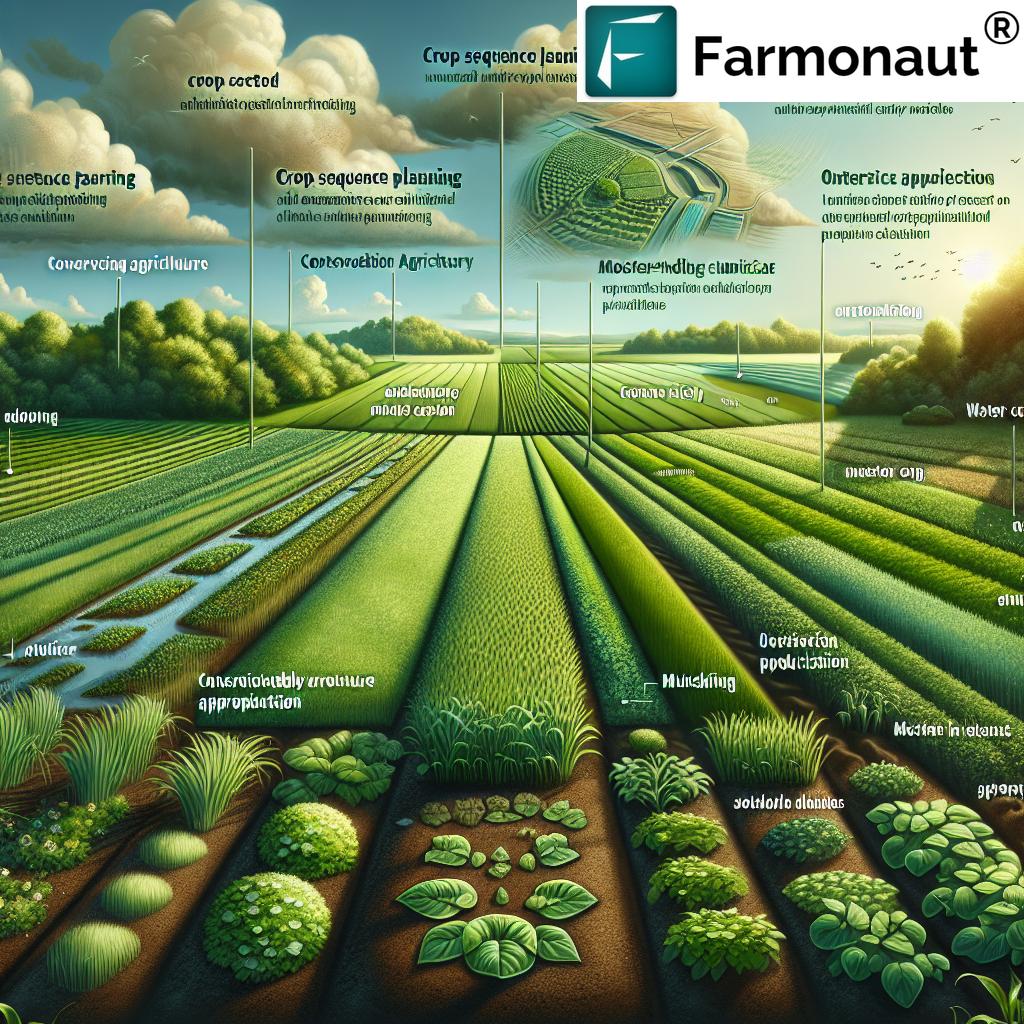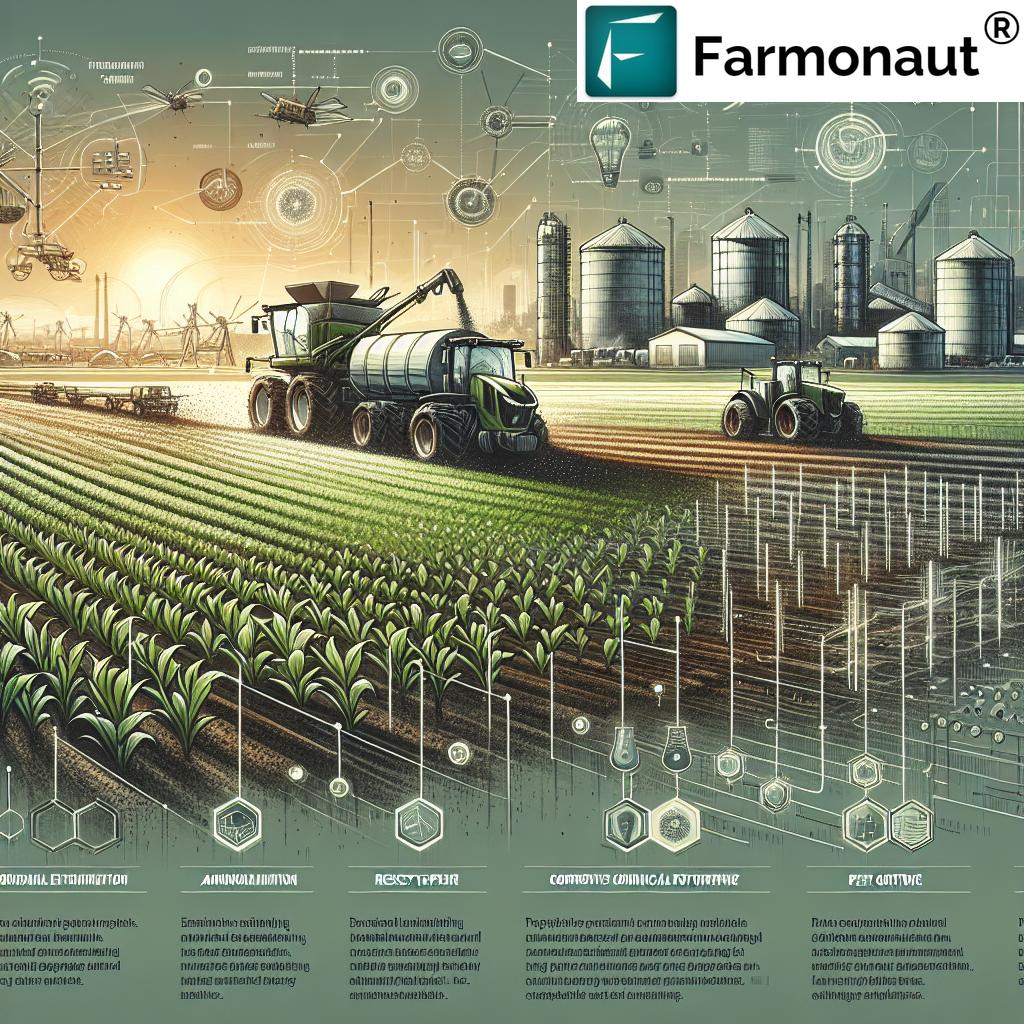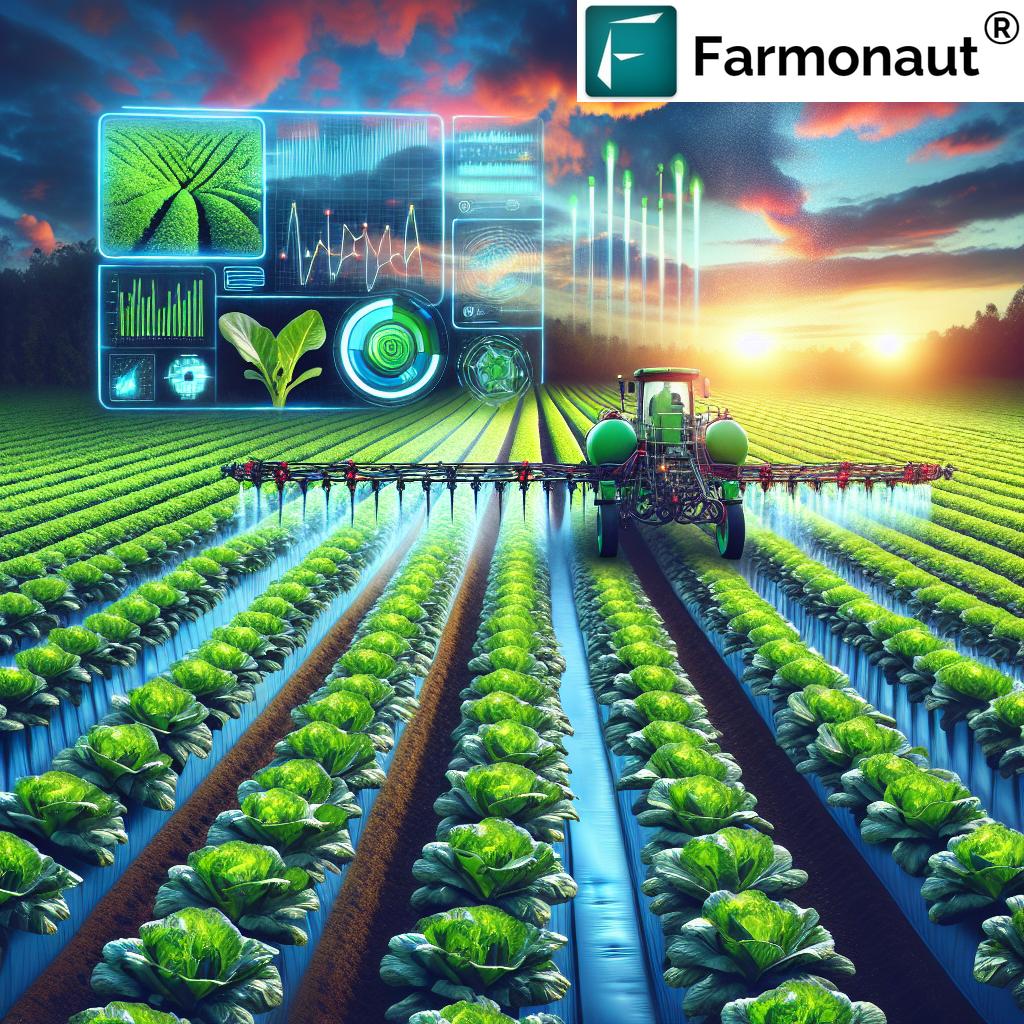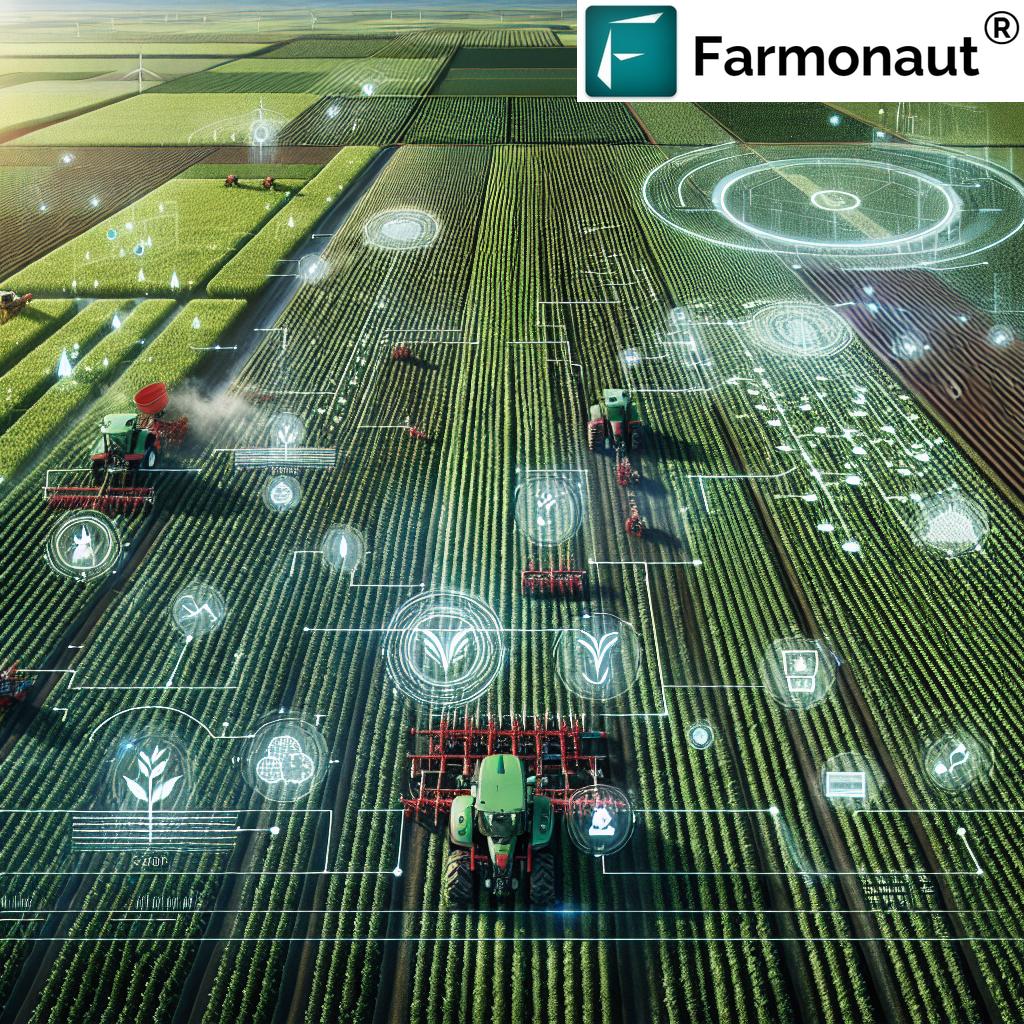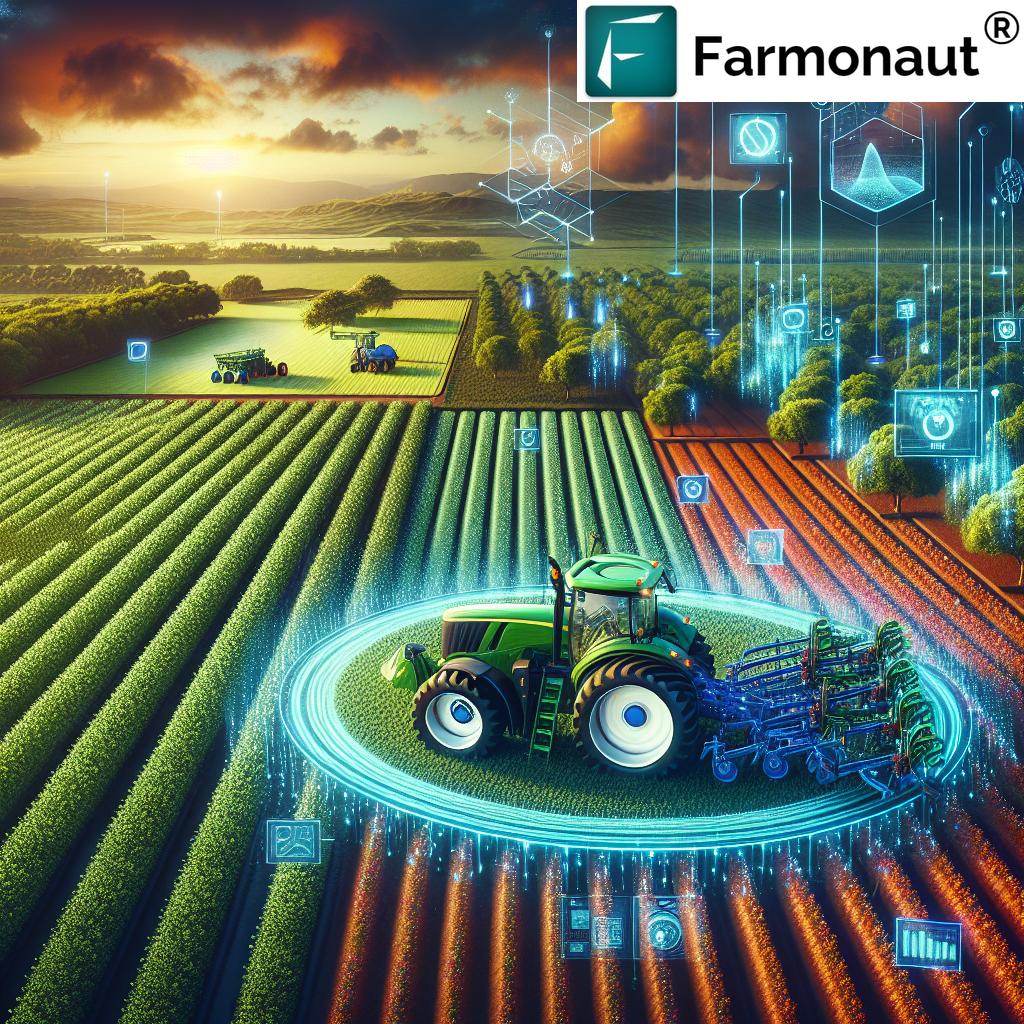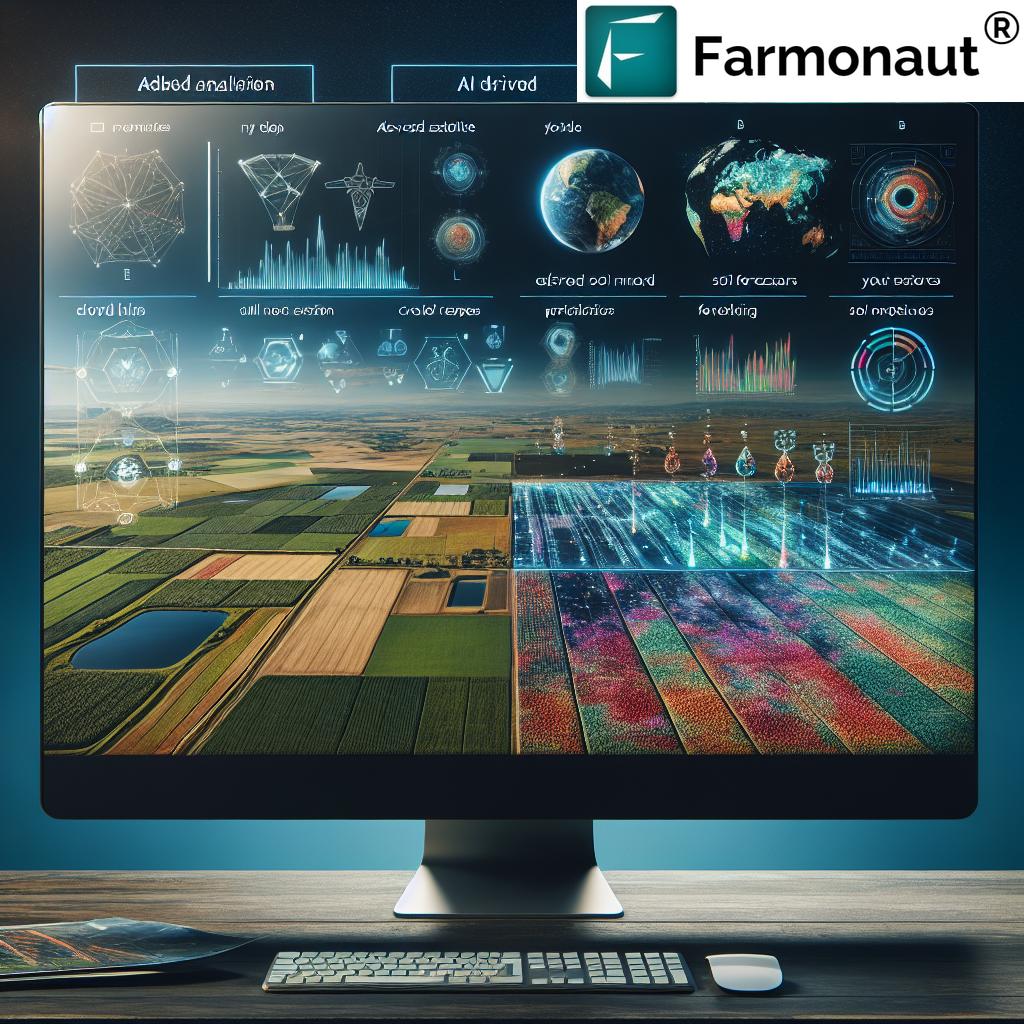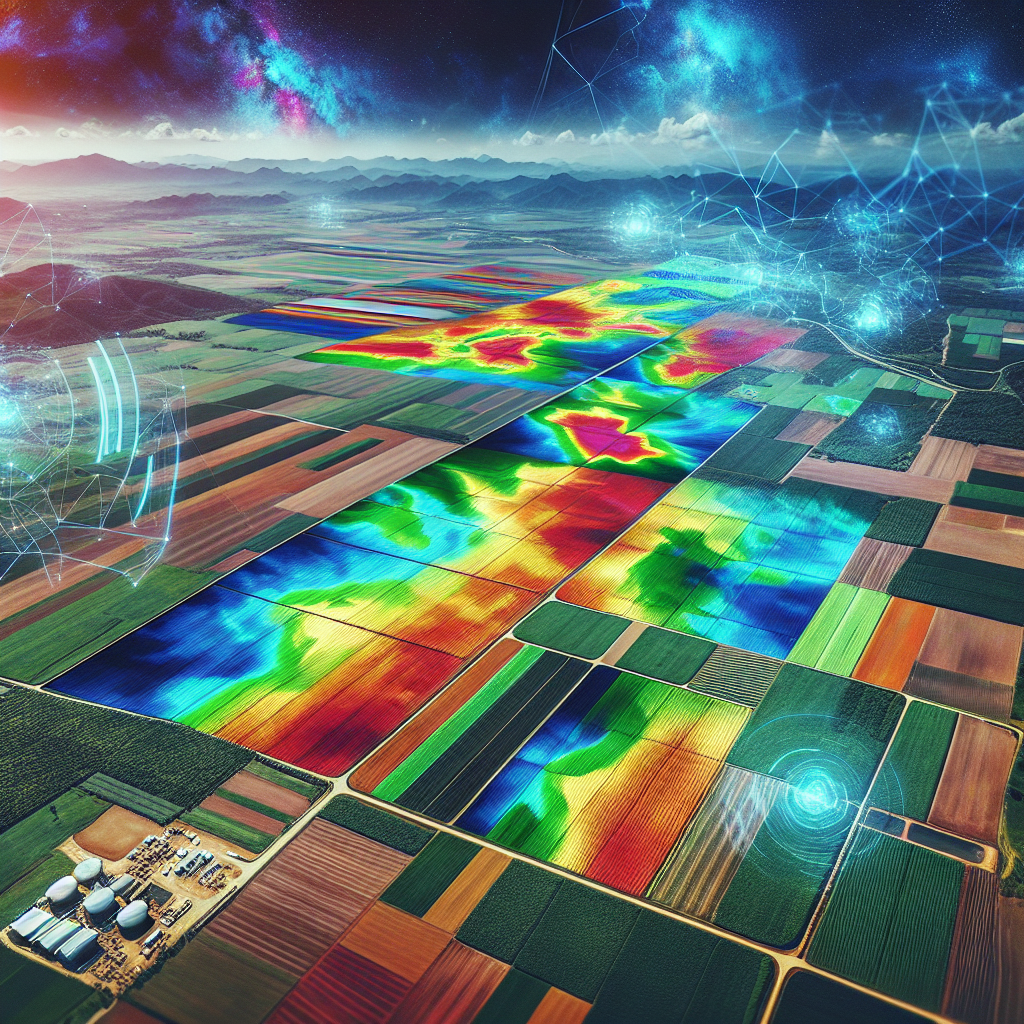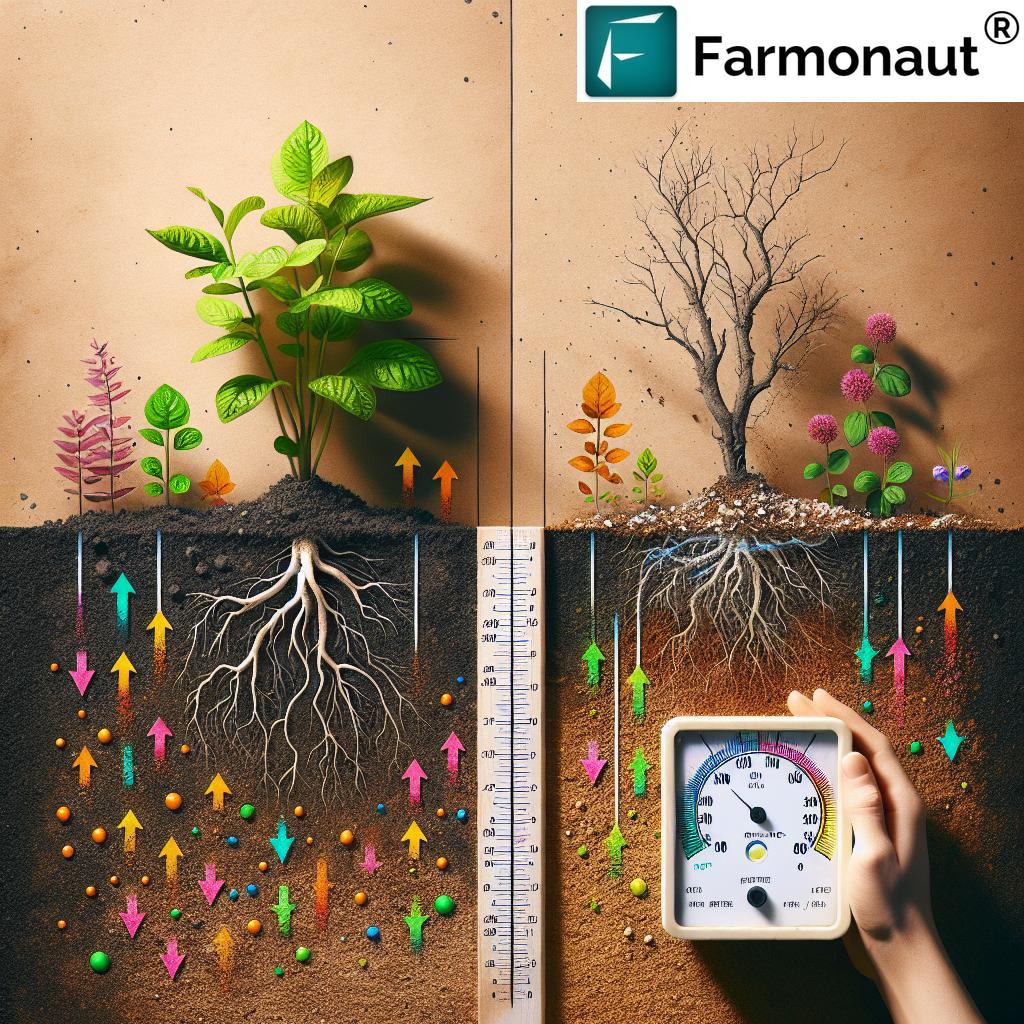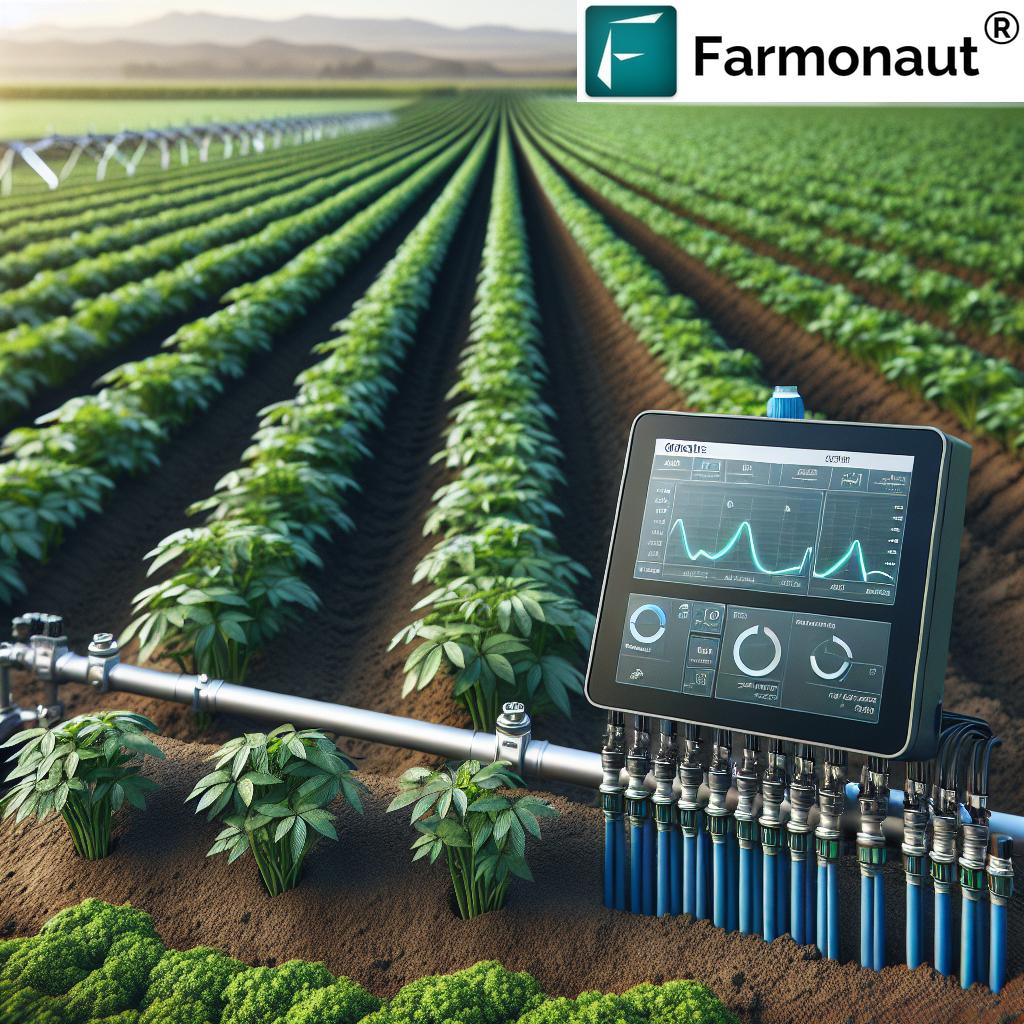7 Secret Hacks for Resource-Efficient Agriculture Success
Table of Contents
- Summary: The Imperative of Resource-Efficient Agriculture
- Key Principles of Resource-Efficient Agriculture
- Comparison Table: 7 Secret Hacks
- 7 Secret Hacks for Resource-Efficient Agriculture
- Farmonaut: Cutting-Edge Agriculture Technologies
- Precision Agriculture Technology & Innovations
- Challenges, Policies, & Future Directions in Resource-Efficiency
- Frequently Asked Questions
- Farmonaut Subscriptions: Flexible Options
“Precision agriculture can reduce fertilizer use by up to 30%, significantly lowering environmental impact and input costs.”
In our rapidly changing world, resource-efficient agriculture is more than a buzzword—it’s an urgent necessity. As the global population rises, food demands soar, and natural resources like water and fertile soil become increasingly scarce, we must adapt our farming systems to ensure long-term sustainability and productivity.
By adopting sustainable farming practices, leveraging innovative agricultural technologies like AI, IoT, and precision agriculture, and embracing a holistic approach to resource optimization, we can produce more food, reduce waste, lower environmental impact, and secure a viable future for the next generations of farmers and consumers.
Welcome to our expert deep-dive on 7 Secret Hacks for Resource-Efficient Agriculture Success. We’ll unveil actionable methods and technologies proven to boost yields, conserve resources, and drive positive transformation in every agriculture sector—from smallholder fields to large-scale agribusinesses.
Key Principles of Resource-Efficient Agriculture
Let’s start with the foundations. Resource-efficient agriculture rests on a combination of proven conservation agriculture methods, sustainable practices, and continuous innovation. Here are three core pillars guiding our approach:
- Minimal Soil Disturbance: By adopting reduced tillage and no-till farming, we maintain soil structure, prevent erosion, preserve organic matter, and help the soil retain moisture. These practices lead to improved fertility and higher crop yields—while promoting long-term sustainability.
- Permanent Soil Cover: Utilizing cover crops, mulching, and crop residues protects the soil from erosion, suppresses weeds, and conserves moisture. This not only improves soil health but also reduces dependence on chemical inputs.
- Crop Diversification: Rotating crops and integrating agroforestry systems enhance biodiversity, disrupt pest and disease cycles, and replenish soil nutrients for resilient and productive farming systems.
“Sustainable farming practices can increase crop yields by 20% while conserving up to 50% more water.”
Comparison Table of Resource-Efficient Agriculture Hacks
| Hack/Practice | Primary Resource Saved | Estimated Savings (%) | Sustainability Impact | Recommended Technologies/Tools |
|---|---|---|---|---|
| 1. Conservation Tillage (No/Reduced Tillage) | Soil, Energy, Water | Up to 25% less soil erosion; up to 15% energy saved | Enhances soil health, reduces CO₂ emissions | Direct seeders, satellite monitoring, soil sensors |
| 2. Permanent Soil Cover (Cover Crops, Mulching) | Soil Moisture, Fertility | Up to 30% more water retained; 15-20% fertilizer saved | Improves soil structure, supports biodiversity | Remote sensing, NDVI analysis, cover crop seeds |
| 3. Crop Diversification & Rotation | Soil, Fertility, Pesticides | Reduces input needs by up to 20% | Reduces pest/disease risk, increases yields | Field mapping, AI-based advisory, planning tools |
| 4. Precision Water Management (Drip & Sensor-Aided Irrigation) | Water, Energy | Up to 50% water saved; 15% energy reduction | Less water use, reduced leaching, resilient cropping | Drip systems, soil moisture sensors, Farmonaut satellite data |
| 5. Precision Nutrient Management | Fertilizer, Cost | Up to 30% fertilizer savings | Minimizes runoff, enhances soil fertility | Fertilizer spreaders, satellite-based NDVI, AI-based input advice, Farmonaut Jeevn AI |
| 6. Integrated Pest Management (IPM) | Pesticides, Biodiversity | Reduces chemical pesticide needs by up to 30% | Less chemical use, promotes beneficial insects | Remote crop health monitoring, pheromone traps, biological agents |
| 7. Renewable Energy-Powered Operations | Fossil Fuels, Emissions | 20-100% fossil fuel offset possible | Reduces GHG emissions, improves farm resilience | Solar pumps, energy monitoring, carbon footprint tools |
7 Secret Hacks for Resource-Efficient Agriculture Success
These seven secret hacks are actionable, science-backed, and firmly rooted in both traditional wisdom and cutting-edge innovative agricultural technologies. Let’s explore how each approach optimizes resource use, enhances sustainability, and increases farm profitability.
1. Conservation Tillage: Minimal Soil Disturbance for Lasting Productivity
Conservation tillage, including no-till and reduced-till systems, emphasizes minimal soil disturbance. By avoiding excessive plowing, we preserve organic matter, enhance soil structure, reduce erosion, and retain moisture. This not only improves fertility and crop health but also lowers energy and labor inputs.
- Reduces greenhouse gas emissions and encourages beneficial soil life
- Boosts agricultural sustainability and promotes resilience against climate change impacts
- Leverage Farmonaut’s Large Scale Farm Management app for real-time satellite-based soil moisture analysis, ensuring you make the best tillage decisions and maximize conservation benefits.
2. Permanent Soil Cover: Maximizing Soil Moisture, Health, and Biodiversity
Maintaining a protective layer on the soil surface—via cover crops, mulching, or crop residue management—is critical for healthy soils and efficient agriculture.
- Reduces erosion and keeps soil temperature stable
- Suppresses weed growth and supports biodiversity in agricultural systems
- Decreases the need for synthetic inputs by enhancing nutrient cycling
Use Farmonaut mobile/web apps to monitor crop canopy health via NDVI and plan ideal periods for sowing cover crops.
3. Crop Diversification & Rotation: Natural Defense for Sustainability
Rotating crops and integrating agroforestry is a time-tested method that addresses multiple challenges:
- Improves soil health by balancing nutrient uptake and organic matter renewal
- Reduces pest and disease outbreaks—thereby decreasing reliance on chemical pesticides
- Increases system resilience, stabilizes yields, and enhances agricultural biodiversity
Farmonaut’s Crop Plantation, Forest, and Advisory tools let farmers plan rotations, select climate-resilient crop varieties, and optimize resource allocation.
4. Precision Water Management: Drip Irrigation & AI for Smart Water Conservation
Water is one of our most valuable (and scarce) natural resources. Embrace tech-driven efficiency by:
- Using drip irrigation and micro-irrigation to deliver water exactly where and when needed—reducing waste, minimizing runoff, and increasing crop yields
- Employing IoT sensors and satellite-based soil moisture analysis (available via the Farmonaut platform) to fine-tune watering decisions and prevent over/under-irrigation
- Choosing drought-resistant crop varieties for more resilient farming in changing climate scenarios
For best results, access Farmonaut’s real-time soil moisture maps and integrate with drip irrigation for optimized water conservation in agriculture.
5. Precision Nutrient Management: Reduce Chemical Inputs, Save Money
Fertilizer overuse can harm the environment and inflate costs. Precision agriculture technology allows us to:
- Apply nutrients only where and when crops need them—maximizing efficiency and minimizing pollution
- Use satellite imagery to identify variable field areas, and tailor input rates for site-specific management
- Leverage AI-powered Jeevn Advisory for data-driven, crop-specific nutrient schedules and recommendations
The result? Lower fertilizer bills, reduced environmental impact, and stronger yields.
6. Integrated Pest Management (IPM): Sustainable Defense Against Pests
Integrated Pest Management (IPM) is an eco-friendly strategy for pest control—combining:
- Biological measures: natural predators and beneficial insects
- Cultural strategies: crop rotation, proper sanitation, resistant varieties
- Mechanical/physical controls: traps, barriers, manual removal
- Chemical controls: targeted, reduced pesticide use—only as a last resort
Farmonaut’s crop health satellite monitoring detects early signs of infestation—enabling timely, targeted action for effective IPM.
For further biological defense, try integrating Farmonaut’s Blockchain Traceability to market your IPM-grown produce directly to conscious consumers with verifiable proof of pest management practices.
7. Renewable Energy-Powered Operations: Clean Power for Modern Farms
The transition to renewable energy is a crucial aspect of resource-efficient agriculture:
- Solar-powered irrigation, machinery, and storage facilities reduce fossil fuel dependence, cut energy costs, and lower GHG emissions
- Integrate Farmonaut’s Carbon Footprinting Tool to track, monitor, and minimize your farm’s environmental impact
- Adopting clean energy makes farms more resilient to energy price shocks and regulatory changes, while contributing positively to agricultural sustainability solutions
Explore Fleet Management for optimizing agricultural machinery usage and further enhancing energy efficiency in farm operations.
Farmonaut: Pioneering Innovative Agricultural Technologies
At the heart of resource-efficient agriculture is smart, accessible technology. Farmonaut stands out as a visionary technology provider by delivering precision agriculture tools that are affordable, intuitive, and powerful for every size and type of operation.
- Satellite-Based Crop Health Monitoring: Our platform provides real-time crop health assessments (NDVI, EVI, NDWI), soil moisture data, and key performance indicators—empowering farmers to optimize irrigation, fertigation, and pest management.
- AI-Driven Advisory (Jeevn): Receive personalized, data-driven advice—from optimal sowing dates to customized input schedules. Unlock Jeevn AI Advisory and transform your decision-making process.
- Blockchain-Based Traceability: Through blockchain technology, Farmonaut improves supply chain transparency for food, cotton, and other crops—boosting market trust and minimizing fraud.
- Fleet & Resource Management: Enhance operational efficiency with smart fleet tracking, logistics planning, and optimization tools—all from your smartphone or computer.
- Carbon Footprinting: Proactively track emissions, work toward sustainability targets, and future-proof your operations with carbon footprint monitoring.
- API Access: Developers and agribusinesses can integrate Farmonaut’s robust satellite and weather data directly into their platforms. Learn more about the Farmonaut API and get developer documentation.
Farmonaut’s business model is flexible for individual farmers, large plantations, government agencies, NGOs, cooperatives, and corporate supply chains—making precision farming accessible and scalable worldwide.
Advancements & Innovations: Precision Agriculture Technology at Work
Modern precision agriculture technology has revolutionized the sector by allowing us to accurately monitor and manage field variability, reduce waste, and elevate both environmental quality and profitability.
- Satellite & Remote Sensing: High-resolution imagery now delivers overlapping insights on crop vigor, plant stress, disease outbreaks, water usage, and input optimization. Tools like Farmonaut Apps bring this power to your fingertips—for Android, iOS, or Web.
- IoT & Sensors: On-field devices monitor microclimate, soil moisture, and plant nutrients—sending real-time data to farm managers for resource allocation and irrigation scheduling.
- Artificial Intelligence (AI) & Analytics: As the volume of agricultural data grows, AI and machine learning extract actionable insights (e.g., yield prediction, input optimization, automated disease detection)—creating a new paradigm in agricultural sustainability solutions.
- Farmonaut Jeevn AI: This proprietary system harnesses data from diverse sources, including satellites, to provide personalized advisory on crop management, pest/disease risks, and even probable market dynamics.
- Blockchain for Traceability: Consumer and corporate demand for transparency is increasing. Farmonaut Traceability delivers immutable tracking from seed to store.
- Carbon & Sustainability Analytics: Calculate, monitor, and minimize your carbon footprint using Farmonaut’s Carbon Footprinting tool.
Challenges, Policy Incentives, & Future Directions in Resource-Efficient Agriculture
Despite the numerous gains, the adoption of resource-efficient agriculture faces hurdles and opportunities for continuous growth.
Challenges
- Economic Constraints: Smallholders and marginalized communities may lack access to upfront finance for new technology and inputs. Farmonaut Crop Loan and Insurance supports institutions in offering satellite-verified credit and insurance to farmers, expanding access and lowering risk.
- Knowledge and Training: Widespread success depends on robust extension services, training programs, and digital literacy—empowering farmers to make full use of modern tools.
- Infrastructure and Policy: Access to markets, credit, communications, and reliable agri-infrastructure is essential for sustained adoption of these best practices.
Government Support & Policy Incentives
Proactive policies catalyze sector-wide adoption. For example, in the United States, the Environmental Quality Incentives Program (EQIP) provides targeted financial assistance for conservation agriculture methods—including resource-efficient technologies, irrigation upgrades, water conservation, and IPM solutions.
- R&D investments—by both public and private sectors—fuel agricultural research, drive innovation, and create climates for future breakthroughs.
- Strengthening infrastructure (storage, transport, cold chains, internet access) enables precision agriculture to be viable at all scales.
- Farmonaut Large Scale Management supports NGOs, governments, and enterprises managing vast agricultural regions, making field-to-policy execution seamless.
A Vision for the Future
The coming decades will see deeper integration of AI, IoT, remote sensing, and big data analytics into everyday farming decisions. As we improve climate-resilient crop varieties, promote agroecological systems, and enhance traceability and transparency, the promise of resource-efficient agriculture will extend worldwide—providing healthy food, economic security, and environmental benefit for all.
Frequently Asked Questions: Resource-Efficient Agriculture
What is resource-efficient agriculture?
Resource-efficient agriculture is a holistic and innovative approach to optimizing the use of natural and artificial resources in farming. It combines sustainable practices, modern technologies, and data-driven management to maximize productivity, minimize environmental impact, and ensure long-term agricultural sustainability.
How does precision agriculture technology support resource efficiency?
Precision agriculture technology leverages GPS, IoT sensors, satellite imagery, and advanced analytics to accurately monitor field variability. This enables farmers to apply inputs (water, fertilizers, pesticides) only where and when needed—boosting efficiency, reducing waste, and enhancing yields.
What role does AI play in modern agriculture?
AI in agriculture analyzes large datasets from diverse sources—such as satellites, sensors, and historical records—to offer predictive insights on optimum planting, irrigation, and pest management (e.g., Farmonaut’s Jeevn AI Advisory). AI empowers farmers to make faster, evidence-based decisions and conserve resources.
How does Farmonaut make precision agriculture accessible?
Farmonaut democratizes advanced farm management by using satellite data—instead of requiring expensive on-ground hardware—making resource-efficient agriculture affordable and scalable. Tools are available via mobile apps, web browsers, and API, with various subscription options tailored to every scale.
How can farmers further adopt resource-efficient practices?
Farmers can implement conservation tillage, adopt cover crops, embrace precision input management via satellite guidance, deploy solar-powered pumps for irrigation, and use IPM strategies to reduce reliance on chemical pesticides—thus improving both farm profitability and sustainability.
What are the key environmental benefits of resource-efficient agriculture?
Environmental benefits include reduced carbon emissions, improved soil health, enhanced water conservation, minimized chemical leaching, and strengthened biodiversity across farming systems.
Farmonaut Subscriptions: Flexible Options for Every Farmer
Ready to optimize your resource use, boost yields, and reduce costs? Explore our flexible subscription plans—perfect for individual farmers, cooperatives, agribusinesses, and institutions. Choose the plan that fits your needs, and start your resource-efficient agriculture journey today!
Conclusion: The Pathway to Agricultural Sustainability
Adopting resource-efficient agriculture is the single most powerful step we can take to address global challenges—like population growth, climate change, and resource scarcity. Through a combination of sustainable practices, leading-edge technologies like AI and remote sensing, and supportive policy environments, we can secure our food systems for generations to come.
Let’s work together to implement these 7 secret hacks, champion innovation, and ensure a healthy, bountiful, and sustainable future for the world’s agriculture—today and tomorrow.
For more details, in-depth resources, and to join the movement, visit these links:
- Carbon Footprinting – Monitor and minimize your agricultural emissions
- Product Traceability – Secure, blockchain-based tracking for agriculture supply chains
- Crop Loan and Insurance – Satellite-verified risk evaluation for institutions
- Fleet Management – Optimized control of machinery and transport for large farms
- Large Scale Farm Management – Integrated satellite insights and reporting
- Crop Plantation, Forest, & Advisory – Start your precision farming journey


